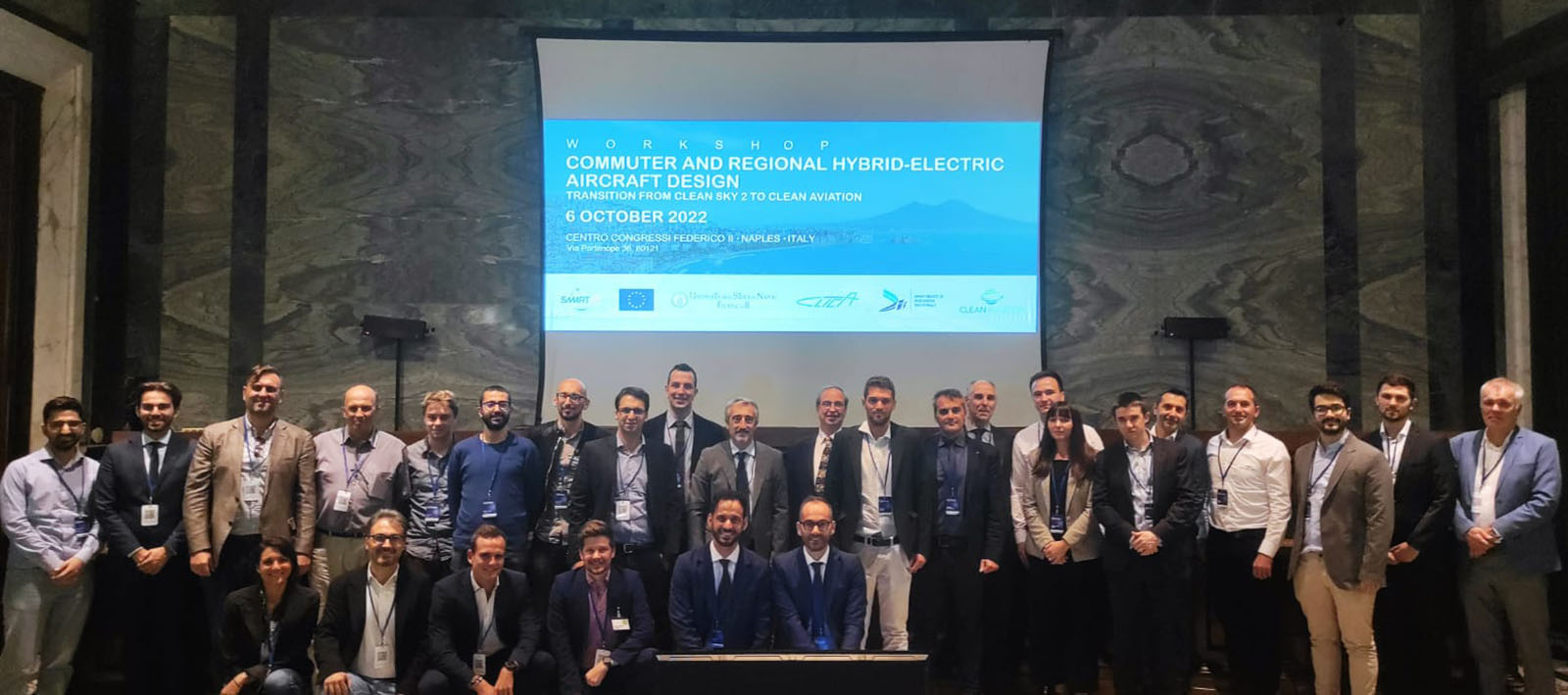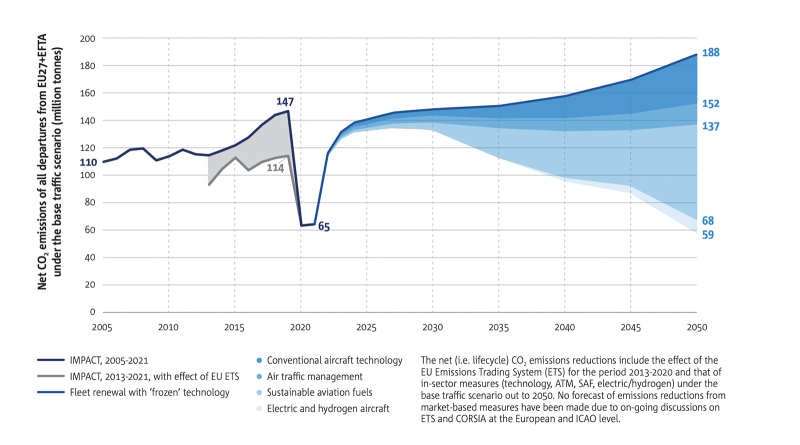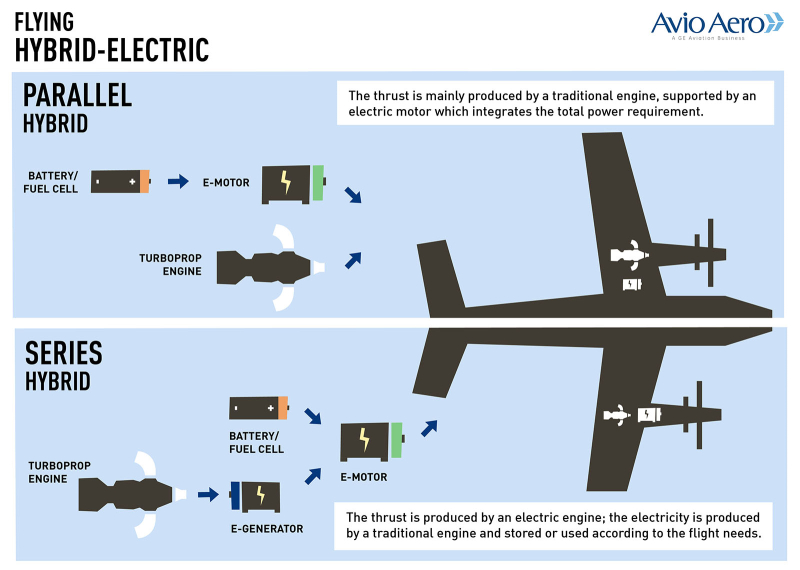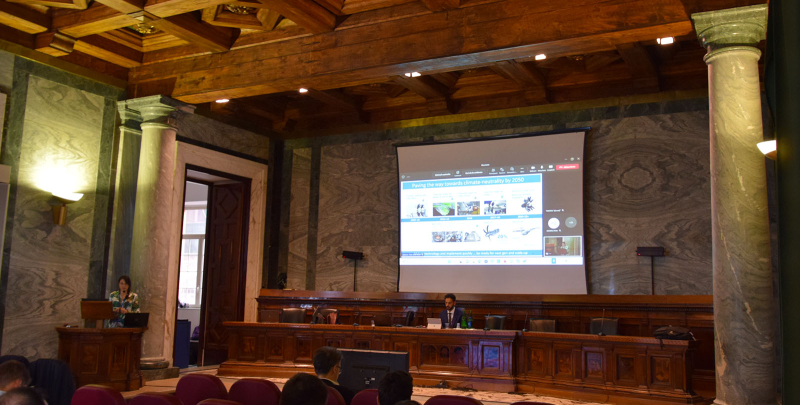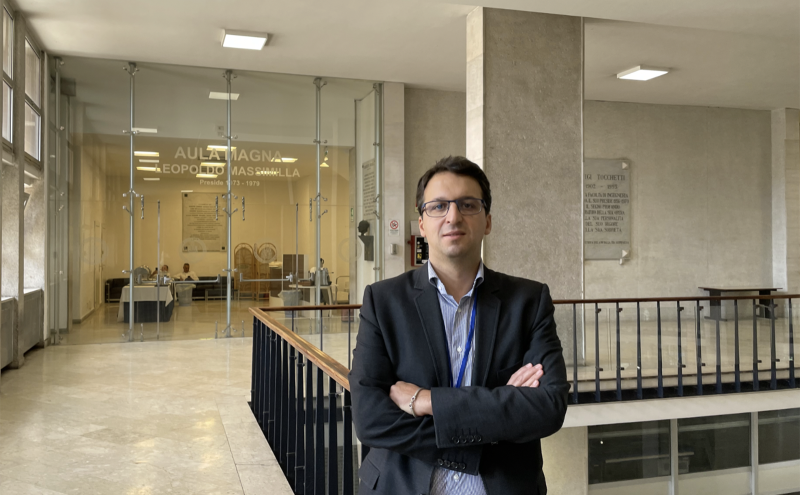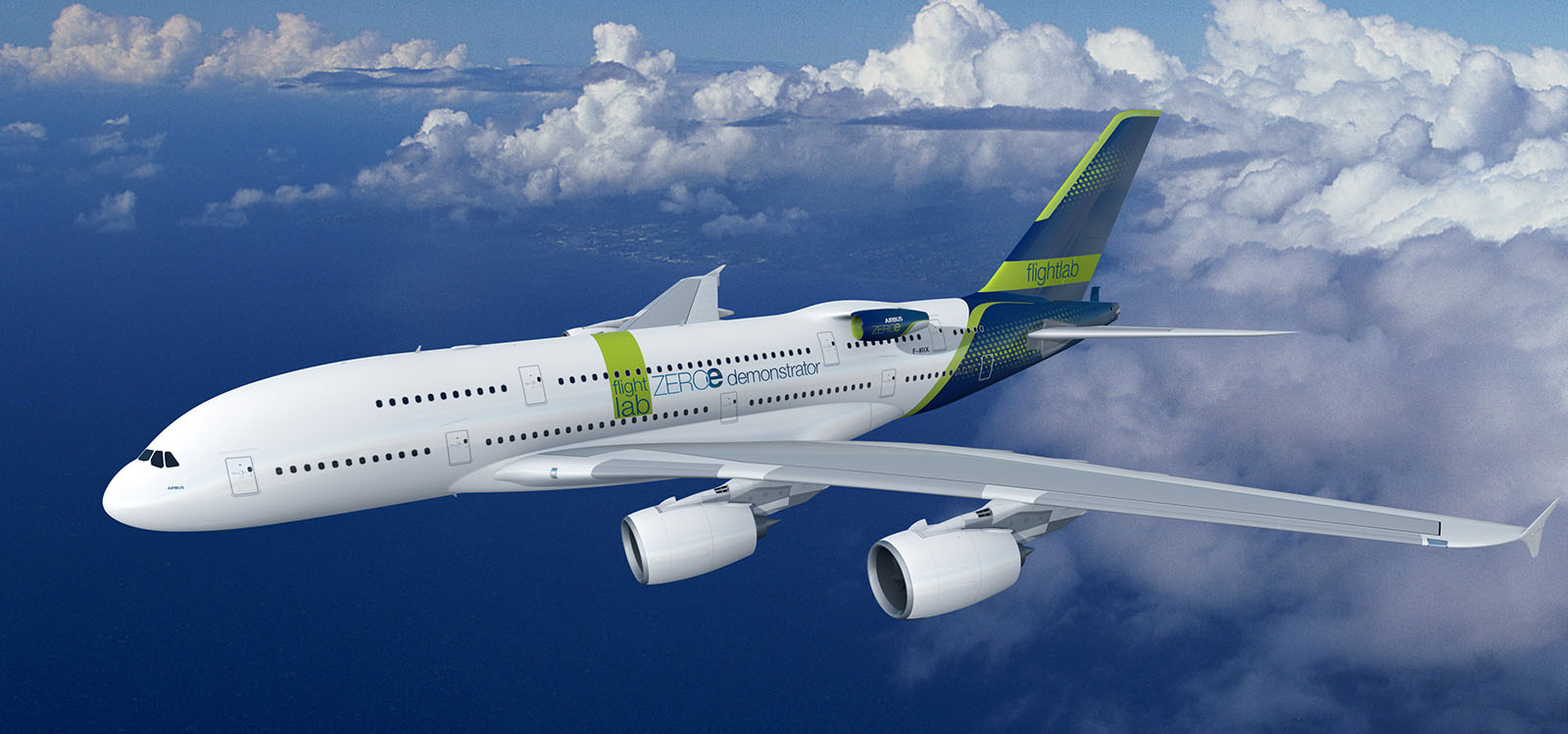Future
European Aviation on the starting line
The launch of the ambitious Clean Aviation program marks a new course and sees Avio Aero coordinating two projects and contribute to others with a focus on electrification, hydrogen and ultra-efficiency.
Oct 2022
Last 6 and 7 October, the University of Naples Federico II and its SmartUp Engineering dedicated a workshop to innovative design for short haul hybrid-electric aircraft (up to 20 passengers) and regional hybrid-electric aircraft (between 40 and 80 passengers), including technological solutions for medium to long haul aircraft (i.e., the airlines’ narrow body planes).
The two days event, set before an autumnal placid Naples’ gulf, has been an invaluable opportunity for European aircraft and engine manufacturers, along with academic experts, to meet a few days after the official launch of Clean Aviation Joint Undertaking, the new pathway of the largest public-private program for research and development in aviation.
Airbus, Leonardo, Piaggio Aerospace and other manufacturers came with the results of their respective Clean Sky 2 projects together with innovative aircraft configurations in the fuselage, as well as in the design of the wing or the fuel tank, or even with distributed propulsion. In parallel, there were engine makers, including Avio Aero, with proposals developed for the use of two or four engines (mainly turboprops) powered by alternative energy sources (from Sustainable Aviation Fuel, SAF) to hydrogen) or electrified.
The ultimate aim was to create a scientific bridge between Clean Sky 2 and Clean Aviation. In fact, as part of the EU Green Deal, the new program for research and innovation has undertaken the ambitious challenge of transitioning to lower or zero emissions, aiming at the demonstration and subsequent adoption of new technologies starting in 2035, in order to achieve the desired outcomes for decarbonisation by 2050.
Last 27 September, Clean Aviation announced the 20 projects based on over 14 technological themes that constitute such ambition. Avio Aero will coordinate two of these themes - in this case, dedicated to hybrid-electric propulsion solutions for regional transport aircraft and the use of liquid hydrogen as a alternative fuel for medium-haul aircraft - and also contribute to three other projects, including one dedicated to the technology maturation of the innovative open fan architecture of CFM’s RISE program (CFM is a 50-50 joint company between GE and Safran Aircraft Engines).
During the workshop, Antonello Marino - Project Officer at Clean Aviation and a guest on the hybrid-electric solutions panel - reiterated that the goal is to achieve technology maturation for these solutions as early as 2025, and then move on to the demonstration stage.”, he said.
"Our ambition is to actually develop and demonstrate, by 2030, disruptive technological innovations through new aircraft concepts," Antonello Marino explained. “These will reduce aircraft greenhouse gas emissions by no less than 50 percent compared to the current state-of-the-art technologies. In the first Phase, until 2026, the planning is to mature the different ‘techno-bricks’ (hybrid powertrain, electrical distribution systems, thermal management, integrated airframe fuselage and wing). The flight demonstration is expected to happen by 2030, aboard a regional aircraft integrating hybrid-electric enabling technologies ready for entry into service by 2035. Among the others, it will include hybrid-electric power train supported by 100% SAF drop-in fuels or hydrogen”.
It is an agenda reflected in the recent Aviation Environmental Report published by the European Aviation Safety Agency (EASA). The report predicts that by 2050 technological innovations adopted within the sector could reduce the CO2 emissions of all flights from airports in EU and EFTA countries by 69%, taking them to 59 million tons (down from 147 million tons in 2019). The largest contribution to that reduction percentage would come from new technologies implemented on aircraft and the use of SAF, as well as improvements in air traffic management and the use of hydrogen in engines.
Following Marino's contribution, and continuing the link between the results of Clean Sky 2 and the pathway to technological maturation path envisaged in Clean Aviation, Avio Aero Enhanced Turboprop & Hybrid-Electric Program Manager Silvia Calabrini also spoke, starting with her experience in the IRON project. The Clean Sky 2 project was carried out in collaboration with Leonardo and focused on hybrid-electric turboprop solutions for regional aircraft, and included contributions from Dowty Propellers and GE Deutschland, Aviation Advanced Technologies.
"From Clean Sky 2 we brought home advanced expertise, especially with regard to propulsion system technologies with innovative architectures, mission-oriented power management, the sizing and integration of engine components. As a result of the various aircraft-engine configuration studies carried out together with the aircraft manufacturer, we focused on the ideal solutions, in addition to identifying the most suitable partners to continue the work in Clean Aviation: industry, as well as R&D, partners from our network of European centers and universities," said Calabrini.
Solutions that introduce a number of opportunities and challenges, which Calabrini summarized in this way: “flexibility in terms of the aviation mission (therefore power management that adapts to duration, travel distances, and the type of flight itself), as well as efficiency in alternating between a thermal engine and electric motor, no doubt represent opportunities and also benefits for operational costs, for fuel consumption. On the other hand, the technological challenges are represented by the need to manage high voltages in the case of hybrid-electric propulsion, the integration of electrical components and their safety and, lastly, by the management of high heat dissipation. We will have to develop the most suitable cooling system; on the storage system side, we will need technological development that leads to an increase in power density".
"We expect Avio Aero to play a crucial role in the development of a hybrid-electric power train and, more specifically, a solution capable of generating several mega-watts of power," said Marino, responding to the expectations held by Clean Aviation in this perspective. “We will certainly have a chance to evaluate the proposed solution more thoroughly in the near future, as soon as the legal and contractual framework of the proposed actions is established.
However, Clean Aviation looks at air transport as a whole, based on three technological pillars which, along with hybrid-electric, include future aircraft powered by hydrogen and ultra-efficient medium-haul aircraft. From the smallest aircraft we come, for example, to the airplanes commonly used to travel across European cities, the so-called narrow body, now driven purely by high efficiency turbofan engines (such as the CFM LEAP, for example).
“Many of the technological solutions designed for this regional segment can be applied to larger aircraft," explained Andrea Milli, Clean Aviation Technical Committee Representative for Avio Aero, who spoke during the second day of the workshop in Naples. "The discriminating factor, in this case, is the power density that hybrid-electric engines are able to develop, specifically for an aircraft carrying, for example, up to 200 passengers and traveling routes over 1,000 nautical miles”.
"Together with the aircraft manufacturer, we focused on the ideal solutions, in addition to identifying the most suitable partners to continue the work in Clean Aviation: industry, as well as R&D, partners"
Since 2014, Milli has worked within GE Aviation Advanced Technologies in Munich, dealing with innovation for the turbines of GE’s large jet engines. As a part of Clean Sky 2, he led his team in the development of multiple projects and demonstrators such as Ultra-High-Propulsive-Efficiency (UHPE), TURN (innovative turbine vane frame design) and ICore (advanced engine core technologies). During the workshop, while mentioning the transition to Clean Aviation, he emphasized an aspect repeated by several speakers: “Developing and maturing these technologies also means being able to combine them within the same propulsion solution. This represents great potential."
Many narrow body aircraft are used for typically regional routes; there is no clear-cut dividing line between the segments and therefore - just as alternative fuels are compatible with hybrid-electric engines, replacing traditional fuel - the use of hybrid-electric and hydrogen power supply can also be combined in applications for medium-haul aircraft.
"Hydrogen has a high thermal power per unit of mass, but it is low in terms of unit of volume, so we focused on liquid hydrogen. This involves a great deal of complexity. To power an aircraft engine with hydrogen, we will have to change it from a liquid state to a gas because liquid is not introduced like traditional fuel," continued Milli.
"Hydrogen has a high thermal power per unit of mass, but it is low in terms of unit of volume, so we focused on liquid hydrogen; this involves a great deal of complexity"
The great challenge of hydrogen flight lies in the development of a highly advanced thermal system capable of switching from liquid hydrogen stored at temperatures around minus 250° to a gas to be mixed in the combustion area. "This complexity, however, can also open up a further opportunity," explains Milli, "namely that of pairing a hybrid-electric engine. The latter needs to dissipate heat, while liquid hydrogen needs that heat to transform into gas. An intelligent thermal system design could offer a combined, highly efficient, zero-emission solution."
Avio Aero is ready for all these new missions, being able to count on its consolidated European R&D network and on the important results collected during the past two editions of Clean Sky, of which it has been a member since 2008. Today, as part of Clean Aviation, it will coordinate multi-stakeholder consortia dedicated to two of those technologies that form the pillars of the new EU-sponsored program, and it will then have to demonstrate them in flight in order to open up a new sustainable era of aviation.
"All of these new technologies will have a profound impact not only on the design of aircraft and their engines, but airport infrastructures and, more generally, the entire aviation ecosystem will also need to be transformed, with ad-hoc rules and policies that also involve the production of energy. We must prepare that ecosystem for the entry into service of the next generation of hydrogen or electric-powered aircraft, and this will require cooperation between sectors and institutions. This is why Clean Aviation has joined the Alliance for Zero-Emission Aviation (AZEA)," Marino added in conclusion.
Avio Aero also recently joined AZEA, an EU public-private initiative which will identify and prioritize the challenges posed by the entry into service of zero-emission aircraft and will propose practical solutions to overcome them. AZEA's ambition is to support Europe in its quest to become the first "climate neutral" continent by 2050.
It is an ambition shared by Avio Aero which, as a result of its refreshed and reinforced European structure, can look forward to these momentous challenges on the strength of its partnerships, solid teamwork with GE's European colleagues, and even with a brand new made-in-Europe turboprop engine. According to the engineers, the Catalyst engine, with its capacity to generate more than a megawatt and its distinctive, advanced technologies, would represent an ideal architecture to demonstrate hybrid-electric solutions for turboprop aircraft of the near future.
cover illustration by Margherita Fruscoloni Morello.



